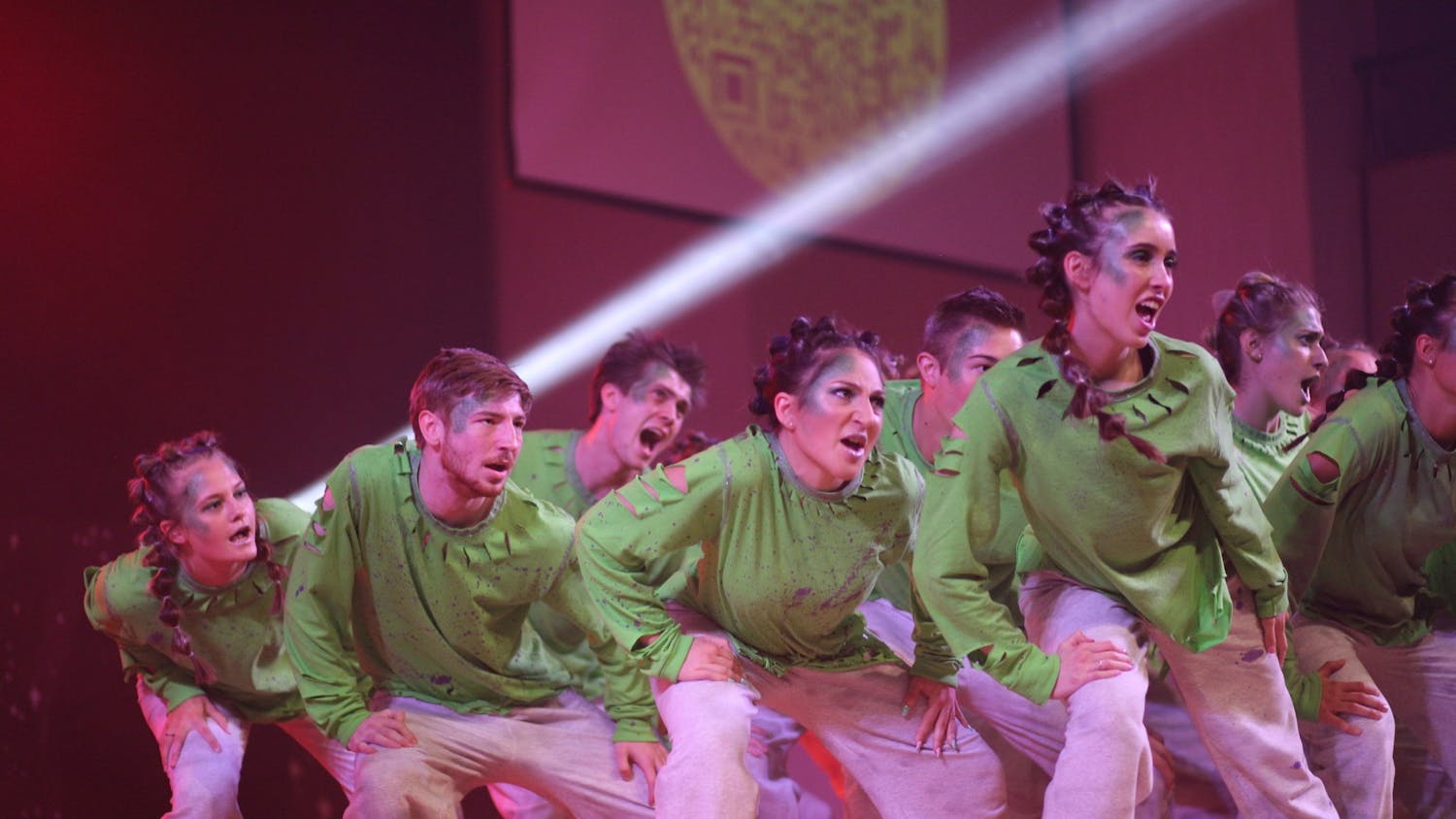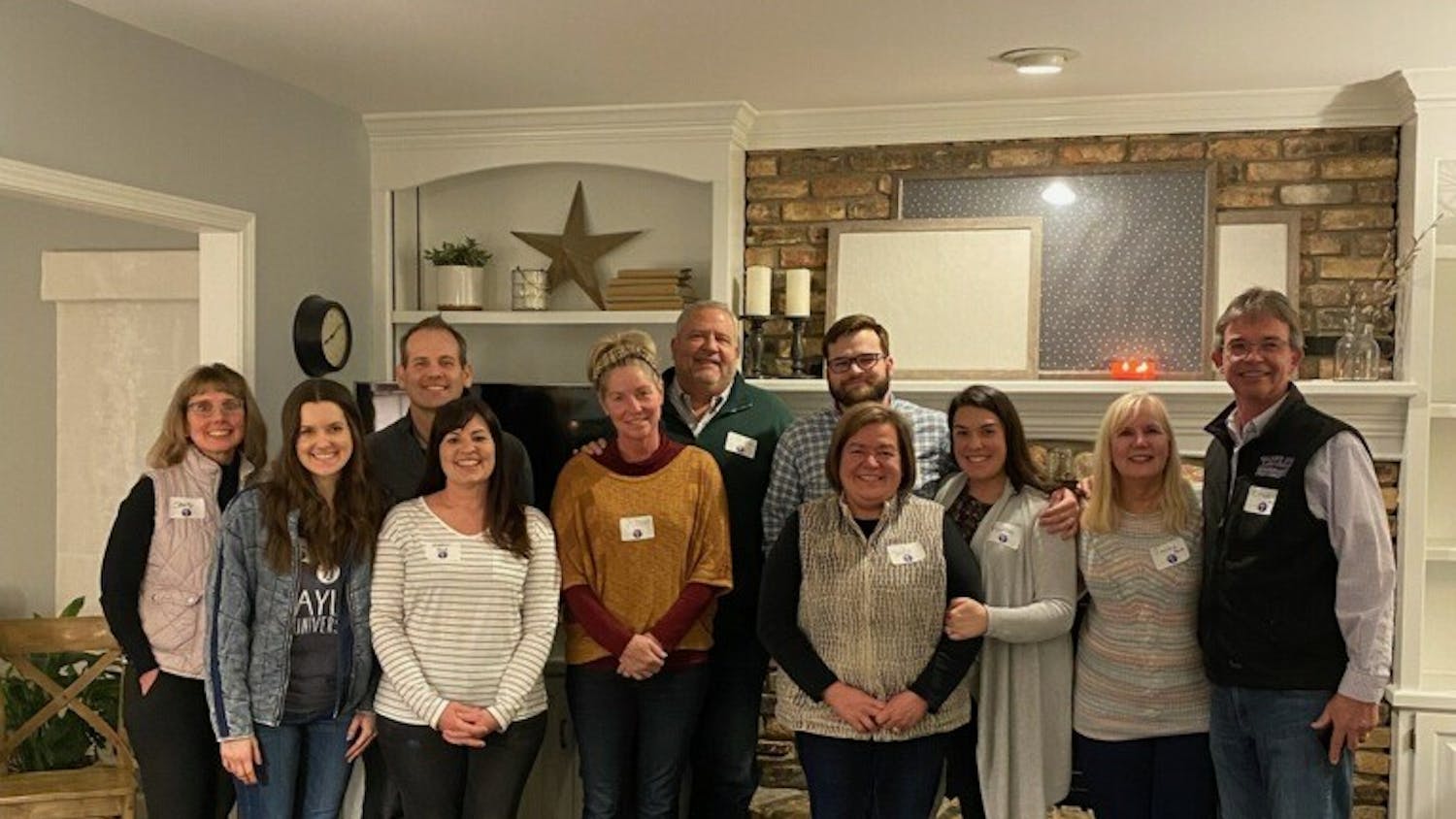You might have noticed a rather large and attention-grabbing installation, set up seemingly overnight, in the popular walkway that connects Rupp and Metcalf. Like the puzzle pieces of a crime scene, strings pulled tight across the map connect the United States with various other regions around the world.
It doesn’t take more than a few seconds to read the bold title. “The Eco-impact of the U.S. on the Globe” is the latest attempt by Global Engagement to inform Taylor’s campus of international affairs.
The Taylor Student Outreach’s Global Engagement (GE) cabinet wanted to form an event around Earth Day, but wasn’t quite sure how. When brainstorming, they thought an unexpected and unusual art installation would speak louder than the typical lecture or Instagram post.
“I hope that even just reading the title will get students thinking, even if they don’t stop to read the research we compiled,” GE sophomore Emma Goossen said.
The cabinet spent a couple of weeks researching pressing environmental issues that occur around the world. Then they decided to hone in on issues that were directly influenced by American decisions.
The purpose was to draw students’ attention to the many decisions made by consumers in the United States that have devastating consequences in other countries. While it takes intentional effort to go to an event, an art installation in a popular place almost forces students to consider the problem.
“It is really important for people to understand that our actions and attitudes toward the environment influence people all around the world, especially the most marginalized people,” GE sophomore Josh Brown said.
After researching, the cabinet put together the art installation. They chose to recycle materials they already had, including using large cardboard boxes from a previous event as the base for the display.
The map was meticulously drawn on the front by hand and then placards highlighting issues ranging from fast fashion to electronic waste were glued on top. Each card contains only a snippet of information, but students have the choice to scan a QR code to read more in-depth on a certain issue.
“Physically taking the string and connecting the US to other countries took the research from just words and made it seem more real,” Goossen said. “You just can’t ignore it.”
Considering Global Engagement has never attempted an art display before, the initiative was a success.
The cabinet learned a lot about how quickly independent choices and desires can impact others. From a biblical perspective, cabinet members believe Christians should work to mitigate the environmental turmoil that takes place worldwide.
“I think it can be a call to action for people, just for them to care about our brothers and sisters around the globe,” GE junior Ivannav Davila said.
Taking just a few minutes to examine the board and trace the strings to a foreign part of the globe might bring viewers to the same conclusion. The display will remain standing, at least in some location around campus, until midweek.




